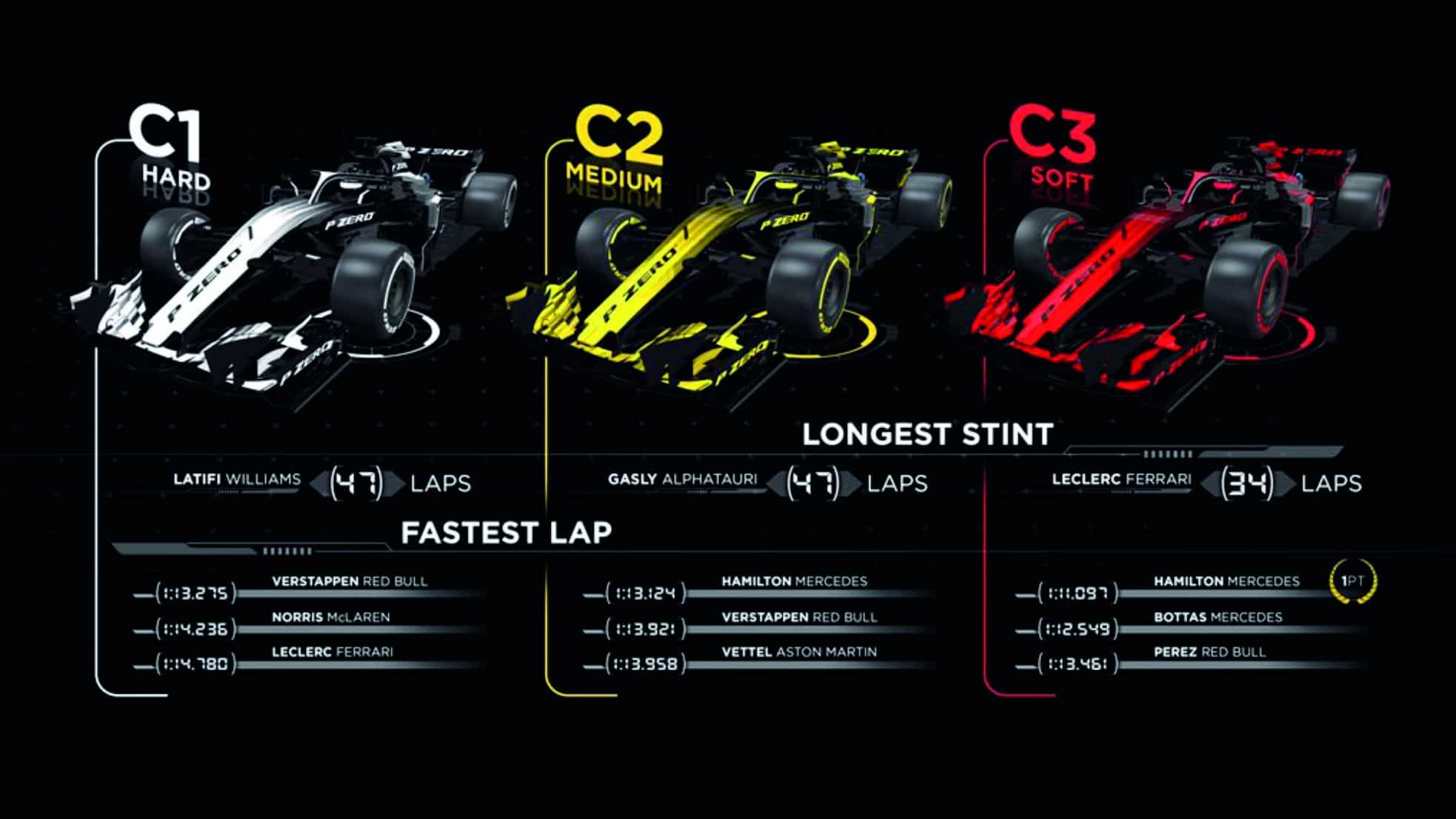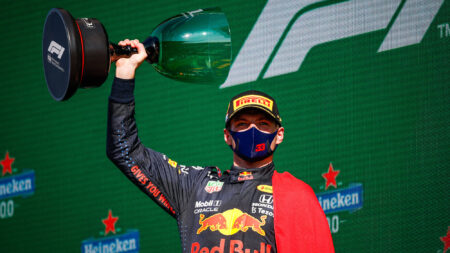Red Bull was loath to surrender track position over Hamilton by anticipating that and pitting Verstappen – in which case Mercedes would have left Hamilton out long, ready to attack on newer tyres late on.
But Mercedes was reluctant to bring Hamilton in so early for his second stop, as it would have entailed a 42-lap stint to the end.
Red Bull would have been able to give Verstappen an optimally-timed stop much later, giving him at least the 1.8sec margin he’d need to overtake by the time he caught the old-tyred Hamilton.
Instead, Mercedes reckoned if Bottas could hold the Red Bull behind for long enough to get Hamilton to a slightly later second stop, they could do the undercut without the big tyre age offset to Verstappen later on.
So with neither team ready to commit to early second stops, it was now crucial that Bottas hold Verstappen off as long as possible. That 1.5sec tyre performance deficit he had might have been enough to allow him to stay ahead. But the Red Bull itself was around 0.3sec faster than the Mercedes around Zandvoort: 1.5sec + 0.3sec = right on the cusp of a pass. Bottas’s 29th lap was a 1min 16.0sec. Verstappen’s was 1min 14.3sec the lap before… It would be close.
It was decided as Bottas locked up his old front-left tyre slightly going into the Turn 11-12 chicane and got a poor exit out. It gave Verstappen the opportunity he needed to slipstream the Mercedes to Turn 13 and onto the banked final turn. He was pulling out of its slipstream and going faster even before DRS activation, which made it a done deal. The pincer had failed, ultimately because the Red Bull had that crucial extra 0.3sec over its rival.
Tyre tactics
Pirelli’s infographic for the Dutch Grand Prix at Zandvoort shows the lap time and life deficit between the three tyres, with the hard and mediums being almost too close to call. It was therefore tough to find the 1.8sec lap time advantage to make passing a sure thing.





